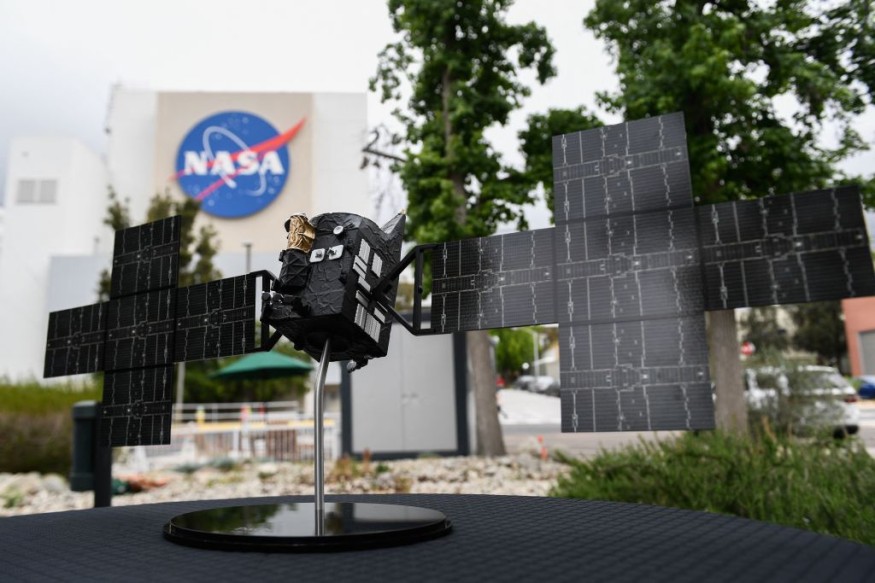Asteroid 16 Psyche is a metal-rich celestial body that may hold the secrets about the origins of the solar system's rocky planets, including Earth. Scientists pointed out that concealed within the space rock is its partially exposed core.
On Thursday, October 12, at 10:16 a.m. EDT (1416 GMT), NASA's Psyche spacecraft is scheduled to launch from Florida's Kennedy Space Center atop a SpaceX Falcon Heavy rocket. After a journey spanning 2.2 billion miles (3.5 billion kilometers), the spacecraft will reach the far side of the asteroid belt between Mars and Jupiter in 2029.

Asteroid 16 Psyche: An Enigmatic Space Rock at the Heart of Cosmic Origins
In the asteroid belt situated between Mars and Jupiter, three primary asteroid categories exist: S-types are stony compositions with some metal; C-types, feature rocky compositions with clays and carbon-bearing compounds; and M-types, presumed to be highly metallic. M-types constitute a mere eight percent of the main belt's asteroids, rendering them a rare and enigmatic class.
Asteroid 16 Psyche, approximately 170 miles wide, was first discovered in 1852 by Italian astronomer Annibale de Gasparis, who bestowed the asteroid with the name of the Greek goddess of the soul.
Notably, its initial classification as an M-type asteroid stemmed from its luminosity, indicative of a high metal content. Remarkably, Psyche's distinctive characteristics include its radar-reflective properties and evidence of substantial density, reinforcing its status as a predominantly metallic body.
This uniqueness has prompted researchers to contemplate various theories about Psyche's origin, with one intriguing proposition suggesting that the asteroid might represent the exposed core of a failed planet- a notion rooted in the process of planetary differentiation where denser elements concentrate at a celestial body's core during its formation.
Studying Psyche's exposed core is intriguing because planetary cores are usually hidden and deduced through seismic data or orbital irregularities. Another theory suggests Psyche might have formed closer to the sun, losing its surface but retaining a robust core, akin to Mercury's.
This enigma surrounds the material's origin and its migration to the asteroid belt, driving planetary scientists to unravel these mysteries with the Psyche mission, promising groundbreaking discoveries.
About the Psyche Mission
Psyche is a van-sized spacecraft equipped with scientific instruments like solar arrays, a magnetometer, and spectrometers for asteroid research. It employs solar electric propulsion to accelerate charged xenon atoms through four thrusters.
As per NASA, these four thrusters operate individually, generating a force equivalent to the sensation of holding three quarters in one's hand. Throughout its journey to the asteroid, the spacecraft maintains communication with Earth via a state-of-the-art Deep Space Optical Communications experiment, which employs lasers to transmit high-bandwidth data back to our planet.
In preparation for its asteroid rendezvous, Psyche's path involves a trip to Mars, utilizing the gentle thrust from its ion thrusters and employing a gravity assist maneuver around the Red Planet, facilitating the spacecraft's arrival at the asteroid by August 2029.
Upon reaching the target, Psyche begins a sequence of wide orbits, initially surveying for a planet-like magnetic field using its magnetometer and subsequently utilizing its multispectral imager to explore the asteroid's surface topography.
As the spacecraft draws nearer in progressively tighter orbits, it employs its laser for mass and density determination and deploys the gamma-ray and neutron spectrometer to assess the asteroid's shape and surface composition.
For those eager to witness the launch, Psyche's mission can be observed on NASA TV starting at 9:30 a.m. EDT (1330 GMT) on Thursday.
RELATED ARTICLE: NASA's $1B Psyche Asteroid Probe Mission Delays Launch to October 12
Check out more news and information on Psyche Mission in Science Times.
© 2025 ScienceTimes.com All rights reserved. Do not reproduce without permission. The window to the world of Science Times.












